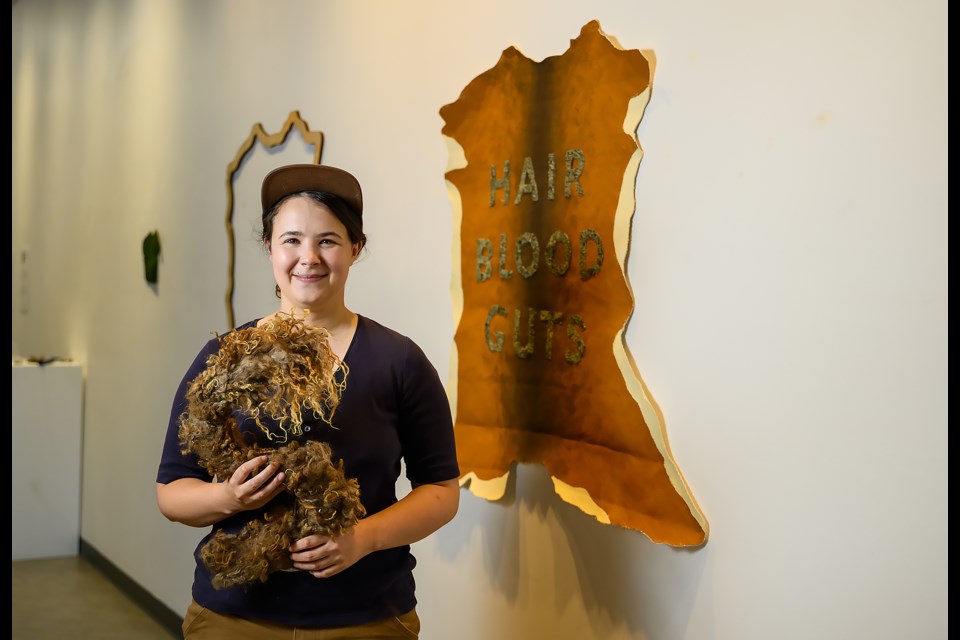CANMORE – Is a hide made of silk still a hide?
For Métis and Cree artist Morgan Possberg Denne, sometimes understanding and reclaiming culture must be done through non-traditional means. Their exhibition, Collecting Spaghnum Moss, explores the idea of relearning ancestral skills and re-establishing lost connections.
“I think that I’ve had this experience, like many others have, where you don’t really know tradition or culture, but you’re kind of doing your best to learn what you can from who you can or from where you can,” said Denne.
The Calgary-based artist’s exhibit explores the loss of connections with ancestral lineage caused by the foster care system and adoption. Using various materials, through different mediums like sculpture, woodworking and papermaking, the exhibit mourns the impact of generational trauma, PTSD and other impacts on Indigenous family ties.
Denne uses materials such as moss – traditionally used by many Indigenous cultures to make moss bags to snugly wrap babies – but also unexpected materials to convey their message.
“I’m using materials that are non-traditional to often suggest a traditional thing, like creating a hideout of something that’s not a hide,” they said.
“I’ve also been using moss a little because it has this history behind it with moss bags and I often do talk about generational or childhood traumas that I think many Indigenous people share.”
Denne, who went through the foster care system, said discussing the topic and loss of culture can be challenging, but it is one they’ve made a point of trying to work through with care.
“It’s a very hard conversation to have because it can easily become like trauma porn,” they said. “It’s a very fine line, I think.”
Using different materials throughout the exhibit is one way Denne makes subtle suggestions about difficult subjects.
“For me, that’s where all these materials come in because I think they all have different storytelling elements, and it kind of tells that story a little bit of you may not know where to get more traditional materials like hides because you might not have that connection,” they said.
Collecting Spaghnum Moss, which opens at artsPlace July 27 and runs until Aug. 27, also seeks to highlight individual strength and resilience, as well as the healing power of seeking out connections and ancestral knowledge.
Despite feeling very loosely connected to their Métis, Cree and Chippawa family connections in Manitoba and Ontario, Denne is appreciative to have grown up around and learned from many Indigenous cultures in Treaty 7.
“I probably have more Blackfoot or Stoney Nakoda or Tsuut’ina knowledge than I do of my own background,” they said. “It’s unfortunate that I haven’t had my own connections, but I’m also very grateful that there’s been people that have been willing to share their knowledge with me here.”
The Local Journalism Initiative is funded by the Government of Canada. The position covers Îyârhe (Stoney) Nakoda First Nation and Kananaskis Country.




